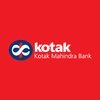
i
Standard Chartered
Filter interviews by
Standard Chartered Interview Questions, Process, and Tips
Standard Chartered Interview Experiences
268 interviews found

K
(1 Question)
- Q1. Name, job profile, experince
(1 Question)
- Q1. Good to join lot of learning
Interview Preparation Tips
Process Associate Interview Questions asked at other Companies
I applied via Approached by Company and was interviewed before Sep 2022. There were 3 interview rounds.

(1 Question)
- Q1. Get ready for Any questions
(1 Question)
- Q1. Tell me something about yourself
Sales Officer Interview Questions asked at other Companies
I applied via Naukri.com and was interviewed before Aug 2022. There were 4 interview rounds.

(1 Question)
- Q1. Discuss on Salary breakdown as I had a bad experience while joining due to Recruiter error.
(1 Question)
- Q1. Process knowledge, go through the JD
(1 Question)
- Q1. Be open discuss on your profile highlight your strength and weakness.
Banking Officer Interview Questions asked at other Companies
I applied via Taleo and was interviewed before May 2022. There were 2 interview rounds.

(2 Questions)
- Q1. Project management scenario based questions
- Q2. Past experience in project management questions
Interview Preparation Tips
Senior Project Manager Interview Questions asked at other Companies
Standard Chartered interview questions for popular designations

(4 Questions)
- Q1. What are your salary expectations?
- Q2. What is your family background?
- Q3. Why should we hire you?
- Q4. Tell me about yourself.
Management Staff Interview Questions asked at other Companies
Get interview-ready with Top Standard Chartered Interview Questions
I applied via Recruitment Consultant and was interviewed in Sep 2021. There were 5 interview rounds.
Interview Questionnaire
2 Questions
- Q1. What does diversity mean to you?
- Q2. How do you habdle negative feedbacks?
- Ans.
I handle negative feedbacks by listening actively, acknowledging the feedback, and taking appropriate actions.
Listen actively to understand the feedback
Acknowledge the feedback and thank the person for sharing it
Take appropriate actions to address the feedback
Use the feedback as an opportunity to improve
Don't take the feedback personally
Interview Preparation Tips
Senior Information Security Engineer Interview Questions asked at other Companies
I applied via Recruitment Consultant and was interviewed in Jul 2021. There were 3 interview rounds.
Interview Questionnaire
3 Questions
- Q1. Initially it was MCQ
- Q2. Coding for develop a stopwatch with start pause, resume and stop button and some question like memory leakage handle on that
- Q3. Treeshaking, webpack build, clouser and some basic inheritance questions
Interview Preparation Tips
Technical Lead Interview Questions asked at other Companies
I applied via Referral and was interviewed before Mar 2022. There were 3 interview rounds.

General apititude Question to test your general work abilities and work scenario
(2 Questions)
- Q1. Business Knowledge specific to domain
- Q2. Product Knoledge and Client handling exprience
Interview Preparation Tips
- Business Development
- Product knowledge
- Communication Skills
Business Development Manager Interview Questions asked at other Companies
(1 Question)
- Q1. Related to financial ratios and past experience
Interview Preparation Tips
Trade Operations Manager Interview Questions asked at other Companies
I applied via Referral and was interviewed in Feb 2021. There was 1 interview round.
Interview Questionnaire
15 Questions
- Q1. Tell me about yourself
- Q2. How would you perform outlier analysis- detection and treatment?
- Ans.
Outlier analysis involves identifying and treating data points that are significantly different from the rest.
Identify outliers using statistical methods such as box plots, scatter plots, and z-scores.
Determine the cause of the outlier and decide whether to remove it or keep it in the dataset.
Consider the impact of outliers on the analysis and adjust the model accordingly.
Use techniques such as winsorization or data tr...
- Q3. How would you impute missing value when we don't ant to use single value for imputation?
- Ans.
Multiple imputation can be used to impute missing values by creating multiple datasets with imputed values.
Use multiple imputation to create multiple datasets with imputed values
Combine the results from the multiple datasets to obtain a final imputed dataset
Consider using predictive models to impute missing values
Evaluate the quality of imputation using metrics such as mean squared error or R-squared
- Q4. How would you perform variable selection before modelling/ multicollinearity?
- Ans.
Variable selection can be done using techniques like correlation matrix, stepwise regression, and principal component analysis.
Check for correlation between variables using correlation matrix
Use stepwise regression to select variables based on their significance
Perform principal component analysis to identify important variables
Check for multicollinearity using variance inflation factor (VIF)
Consider domain knowledge a...
- Q5. How would you test variable importance
- Ans.
Variable importance can be tested using various methods such as permutation importance, drop column importance, and SHAP values.
Permutation importance involves randomly shuffling the values of a variable and measuring the decrease in model performance.
Drop column importance involves removing a variable from the model and measuring the decrease in model performance.
SHAP values provide a measure of the contribution of ea...
- Q6. What is Logistic Regression and when do we use it?
- Ans.
Logistic Regression is a statistical method used to analyze and model the relationship between a binary dependent variable and one or more independent variables.
It is used when the dependent variable is binary (0 or 1).
It estimates the probability of an event occurring based on the values of the independent variables.
It is commonly used in credit risk analysis to predict the likelihood of default.
It can also be used in...
- Q7. How would you test model performance of classification models?
- Ans.
Model performance of classification models can be tested using various metrics.
Use confusion matrix to calculate accuracy, precision, recall, and F1 score.
ROC curve and AUC can be used to evaluate model's ability to distinguish between positive and negative classes.
Cross-validation can be used to test model's performance on different subsets of data.
Use lift charts to compare model's performance with random selection.
U...
- Q8. What is Loss function in Logistic Regression?
- Ans.
Loss function in Logistic Regression measures the difference between predicted and actual values.
It is used to optimize the model parameters during training.
The most common loss function used in logistic regression is the binary cross-entropy loss.
The goal is to minimize the loss function to improve the accuracy of the model.
The loss function is calculated using the predicted probabilities and the actual labels.
Other l...
- Q9. What is Xgboost? How it is different from Random Forest?
- Ans.
Xgboost is a gradient boosting algorithm used for classification and regression tasks. It is faster and more accurate than Random Forest.
Xgboost stands for Extreme Gradient Boosting
It is a type of gradient boosting algorithm that uses decision trees
It is faster and more accurate than Random Forest
Xgboost uses a more regularized model formalization to control overfitting
Random Forest builds multiple decision trees and c...
- Q10. What loss function is used in Xgboost?
- Ans.
The loss function used in Xgboost is customizable and can be specified by the user.
Xgboost supports various loss functions such as binary logistic regression, multi-class classification, and regression.
The default loss function for binary classification is logistic regression while for regression it is mean squared error.
Users can specify their own loss function by defining a custom objective and evaluation function.
Th...
- Q11. What are the parameters in Xgboost?
- Ans.
Xgboost parameters include learning rate, max depth, subsample, colsample by tree, and more.
Learning rate controls the step size during training.
Max depth limits the depth of each tree.
Subsample controls the fraction of observations to be randomly sampled for each tree.
Colsample by tree controls the fraction of features to be randomly sampled for each tree.
Other parameters include min child weight, gamma, and lambda fo
- Q12. What is the use of Learning rate in Xgboost?
- Ans.
Learning rate controls the step size at each boosting iteration in Xgboost.
Learning rate is a hyperparameter that determines the contribution of each tree in the final output.
A smaller learning rate requires more trees to be added to the model, but can lead to better performance.
A larger learning rate can speed up the training process, but may result in overfitting.
Typical values for learning rate range from 0.01 to 0....
- Q13. How would you measure relationship between two features?
- Ans.
The relationship between two features can be measured using correlation coefficient.
Calculate the correlation coefficient using statistical methods.
Correlation coefficient ranges from -1 to 1.
A positive correlation indicates a direct relationship between the features.
A negative correlation indicates an inverse relationship between the features.
A correlation coefficient of 0 indicates no relationship between the feature
- Q14. What is p value and what it's interpretation?
- Ans.
P value is the probability of obtaining a result as extreme or more extreme than the observed result, assuming the null hypothesis is true.
P value is used in hypothesis testing to determine the significance of a result.
A small p value (less than 0.05) indicates strong evidence against the null hypothesis.
A large p value (greater than 0.05) indicates weak evidence against the null hypothesis.
P value should not be used a...
- Q15. Given a 4 coordinates, write a memory efficient program to check if it's forming a square
- Ans.
Program to check if 4 coordinates form a square
Calculate distance between all pairs of points
Check if all distances are equal
Check if diagonals are equal
Use Pythagorean theorem to calculate distance
Interview Preparation Tips
Skills evaluated in this interview
Top Standard Chartered Credit Risk Analyst Interview Questions and Answers
Credit Risk Analyst Interview Questions asked at other Companies
Top trending discussions






Standard Chartered Interview FAQs
Some of the top questions asked at the Standard Chartered interview -
The duration of Standard Chartered interview process can vary, but typically it takes about less than 2 weeks to complete.
Tell us how to improve this page.
Standard Chartered Interviews By Designations
- Standard Chartered Senior Manager Interview Questions
- Standard Chartered Software Developer Interview Questions
- Standard Chartered Associate Manager Interview Questions
- Standard Chartered Relationship Manager Interview Questions
- Standard Chartered Senior Analyst Interview Questions
- Standard Chartered Specialist Interview Questions
- Standard Chartered Team Lead Interview Questions
- Standard Chartered Business Development Manager Interview Questions
- Show more
Interview Questions for Popular Designations
Standard Chartered Interview Process
based on 91 interviews in last 1 year
Interview experience
Interview Questions from Similar Companies
Fast track your campus placements
Standard Chartered Reviews and Ratings
based on 4.4k reviews
Rating in categories
|
Team Lead
2.5k
salaries
| ₹3 L/yr - ₹11 L/yr |
|
Associate Manager
2.3k
salaries
| ₹5.2 L/yr - ₹19.2 L/yr |
|
Senior Officer
2.3k
salaries
| ₹1.8 L/yr - ₹7 L/yr |
|
Manager
2k
salaries
| ₹7 L/yr - ₹28.3 L/yr |
|
Senior Analyst
1.9k
salaries
| ₹2 L/yr - ₹8.8 L/yr |

HSBC Bank

Citibank

ICICI Bank

HDFC Bank
- Home >
- Interviews >
- Standard Chartered Interview Questions















